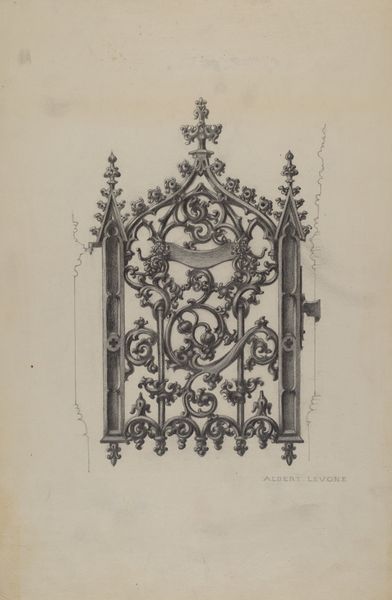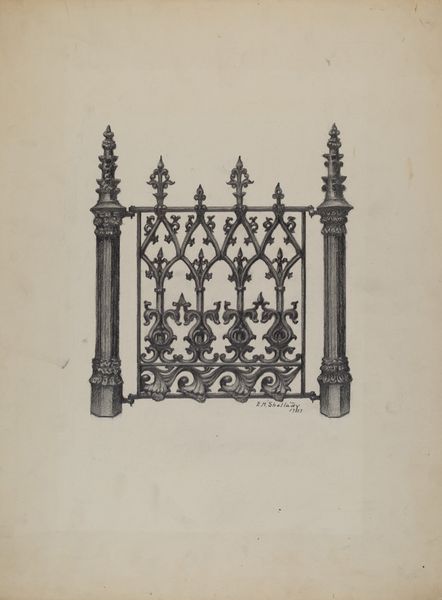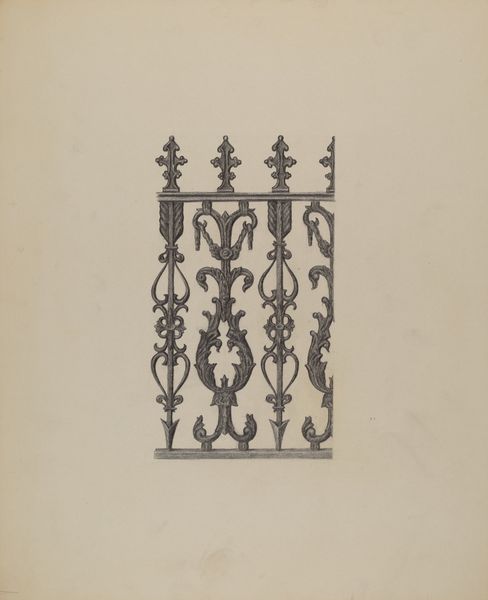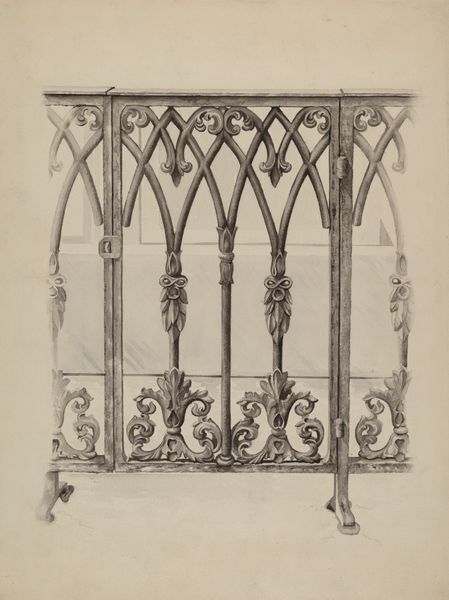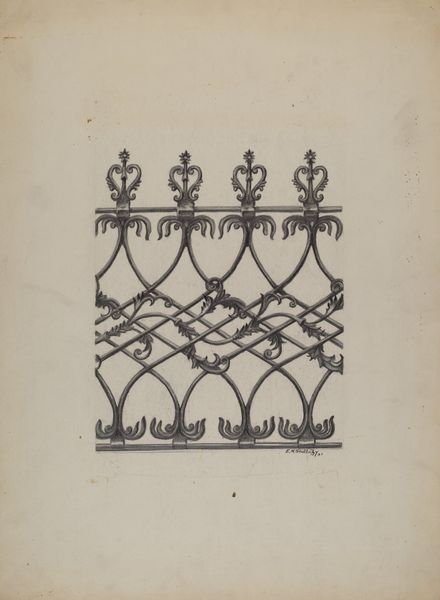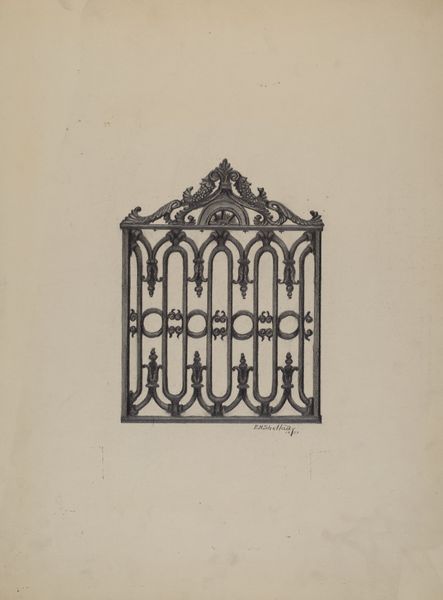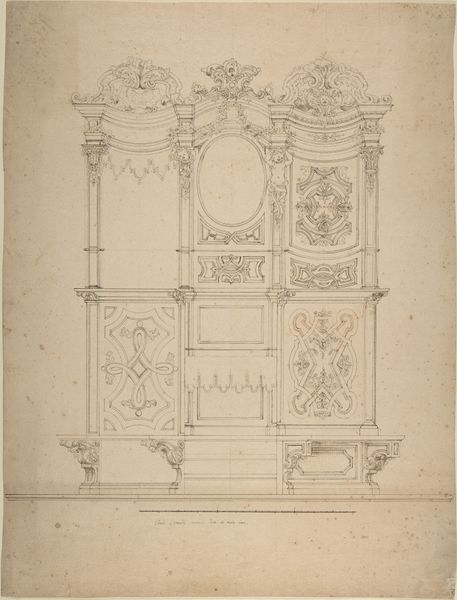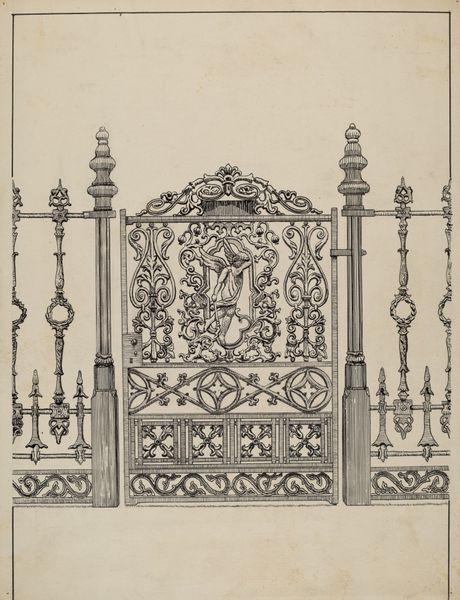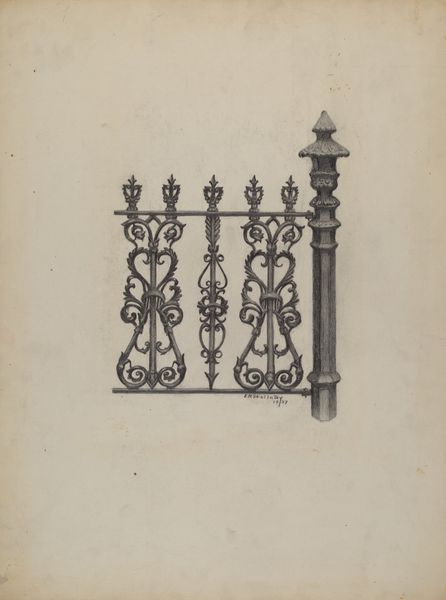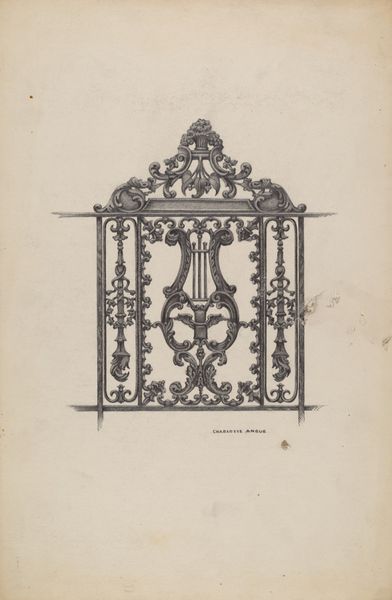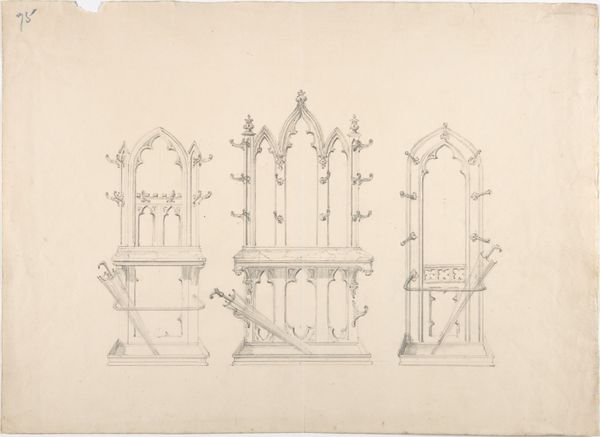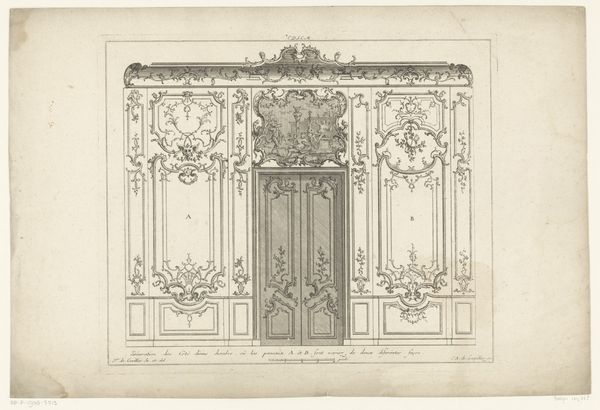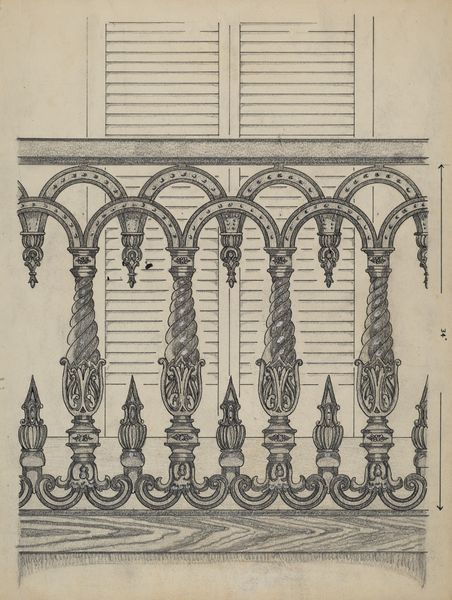
drawing, metal, pencil
#
drawing
#
metal
#
geometric
#
pencil
#
line
Dimensions: overall: 45 x 38 cm (17 11/16 x 14 15/16 in.)
Copyright: National Gallery of Art: CC0 1.0
Curator: Up next, we have "Cast Iron Fence," a pencil drawing on paper made around 1937 by Charlotte Angus. It offers a meticulously rendered section of ornate ironwork. What's your initial impression? Editor: I’m immediately struck by its precision and the way it seems to isolate and elevate a typically overlooked detail. It feels like the artist is compelling us to reconsider the artistry in everyday industrial objects. Curator: Precisely. The fence, rendered in such detail, transforms from a functional boundary into a statement about class and spatial control. How does this division reflect societal barriers and who is excluded, in turn, by such ornamentation? Editor: Thinking about the means of production, this wasn’t mass-produced in a factory. Even though the design uses repeating elements, someone somewhere poured and cast this, and then a draughtsman labored over replicating it, considering it. It points to an engagement of labor. Curator: That resonates. Fences are always about delineation. To look at who makes it, from what raw materials, and to what standards, illuminates the political framework around property rights, particularly as they disproportionately impact communities and perpetuate economic divisions. Editor: Absolutely. Plus, fences have different resonance for different genders. As it regulates social spaces, a fence may reinforce notions of protection but simultaneously symbolize restriction, even domesticity. A decorative cast iron fence might signal security, or it could indicate a woman's limited sphere, especially given that it's a drawing by a female artist. Curator: A powerful interpretation. Seeing this rendering, also consider who could access that security then. Whose access was granted and to whom was it denied? This then opens an array of complex questions about labor, craftsmanship, and consumption during this historical moment, especially amid discussions of wealth, equity and exclusion. Editor: Agreed, and stepping back from its sociopolitical dimension for a moment, the sheer labor involved—the drawing of such an intricate design by hand–invites contemplation about value. What is valued by artists at any given moment, in material ways? And how are we seeing a shift over time, as value may transition from product to process, or vice versa? Curator: Considering the time period adds a crucial layer of analysis. It helps reveal perspectives on who creates, whose stories get represented, and who bears the costs. Editor: Thanks for emphasizing those critical intersectional dimensions. It's fascinating to think about labor involved both in the initial manufacture, the craft involved, and now with the meticulous drawing and design of an industrial, practical object!
Comments
No comments
Be the first to comment and join the conversation on the ultimate creative platform.
